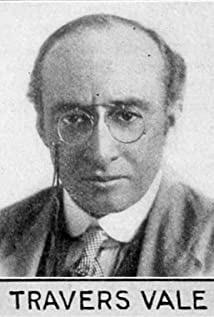1865-1927
British born silent film director Travers Vale was born Solomon Flohm in Liverpool, England on this day. He was the son of Polish Speaking Russian Jews who had emigrated to the UK fleeing the Crimean War. Not long after Solomon was born, the family left for Australia, settling in Victoria. It seems the entire family emigrated to the area, as Solomon's first experience with any sort of medium that would lead into film direction was working as a photographer for his uncle Aaron, who was a well-established professional photographer in the territory (I have to mentioned that in addition to being Solomon's uncle, Aaron was also his father-in-law-owing to Solomon's marrying his first cousin--Aaron's daughter Leah). During this time Solomon (Travers) had his interest in stage production sparked. This lead to his eventually moving to Melbourne and working his way up to stage manager there. What sparked this change in his career path is not known exactly, but the whole family was known to be supportive of the arts and enjoyed family musical performances. In any case, it was at this time (again circumstances unknown) that he started using the name "Travers Vale." Sometime in the late 1890's he left with his wife for India, eventually making his way back to the UK. By 1900, they were in the United States, in the state of Alabama, known due to the birth of their second daughter. They were still there in 1904, because his wife Leah died there during that year. He then moved his little family to New York and got involved with Vaudeville. It wasn't a very hop away into the buzzing film industry--his background in photography would have been and plus, add in his stage/production managerial experience and his resume would have been quite attractive. The first film that he directed--as Travers Vale of course--was also the first production release of the new Champion Film Company: Abernathy Kids To The Rescue, a western, in 1910. He is not credited with directing another film until 1913 (The Blacksmith's Story made for Pilot Films), after which he worked constantly. He worked for Pilot for most of 1913, and it with that company that he penned his first scenario for The Girl Of The Sunny South, which he also directed (he was by this time remarried and his new wife Louise stars here as well). A few of these short films featured names that became famous, or at least famous by association, they included: Harry Carey, Dorothy Gish and Lottie Pickford. In 1916, he produced his first film A Beast Of Society, which he of course directed and also starred his wife, who was by this time in almost every one of his films. The vast majority of his nearly 110 directing credits come between the years 1913 and 1919. In 1918 his second wife died during the outbreak that became known as "The Spanish Flu," although he married again, this event seems to have effectively killed the momentum that he had in his career. He only directed four films in the 1920's, one of which he produced (A Pasteboard Crown (1924)) and one of which he served as his own DP on (The Street Of Tears (1924)). He also penned a story/screenplay that was produced in 1925 which he did not direct himself; Barriers of the Law was directed by fellow Aussie J. P. McGowan. The last film that he directed was a western for Universal, entitled Western Pluck. He was by this time living in Hollywood and he died there at a relatively young age, succumbing to cancer on the 10th of January just before his 62nd birthday in 1927. As of this writing, details of his burial are unknown. In 1945, his 1915 film East Lynne made for Biograph and featuring Alan Hale Sr. was afforded a closer look in the four part anthology Gaslight Follies, which featured a look back at the era of narrative silents in the 1910's and 1920's.















































